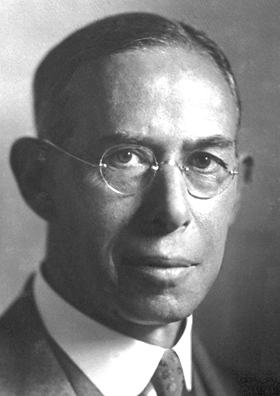Why was Joseph Erlanger Awarded the Nobel Prize for Physiology or Medicine in 1944?
Joseph Erlanger: Nobel Laureate for Pioneering Research on Nerve Fibers and Nerve Conduction (1944)
Joseph Erlanger, an American physiologist, made groundbreaking contributions to the field of neuroscience during the early 20th century. Renowned for his pioneering research on nerve fibers and nerve conduction, Erlanger played a pivotal role in advancing our understanding of the electrical properties of nerve cells. In recognition of his exceptional work, he was awarded the Nobel Prize for Physiology or Medicine in 1944. This article explores the reasons behind Erlanger’s prestigious honor and highlights his remarkable scientific breakthroughs.

Investigations on Nerve Conduction:
Joseph Erlanger’s Nobel Prize was primarily awarded for his investigations into the electrical properties of nerve fibers and the conduction of nerve impulses. Collaborating with Herbert Spencer Gasser, Erlanger conducted groundbreaking experiments that shed light on the transmission of nerve signals.
One of Erlanger’s significant contributions was his development of a technique called “nerve block.” This method involved the temporary disruption of nerve conduction by applying pressure or cooling to specific nerve fibers. Through nerve block experiments, Erlanger and Gasser could distinguish different types of nerve fibers based on their responses to various stimuli.
Discovery of Specific Nerve Fiber Types:
Erlanger and Gasser’s research resulted in the identification of specific nerve fiber types, each responsible for transmitting different types of sensory information. They classified nerve fibers as either A, B, or C fibers based on their diameter and conduction velocity. This classification became instrumental in understanding the diversity of nerve functions and the transmission of sensory information to the brain.
Erlanger and Gasser’s work provided crucial insights into the underlying mechanisms of nerve conduction, paving the way for further advancements in the field of electrophysiology.
Impact on Neuroscience and Medicine:
Joseph Erlanger’s discoveries had a profound impact on the fields of neuroscience and medicine. His research on nerve fibers and nerve conduction significantly advanced our understanding of how nerve impulses are transmitted along neurons.
Erlanger’s work became essential in the study of nerve-related disorders and provided a foundation for the development of diagnostic and therapeutic approaches. Understanding the specific functions of different nerve fiber types facilitated the identification of nerve-related dysfunctions and the development of targeted treatments.
Recognition and Legacy:
Joseph Erlanger’s Nobel Prize in 1944 celebrated his exceptional scientific achievements and the transformative impact of his research in the field of neuroscience. His groundbreaking work in electrophysiology revolutionized our understanding of nerve conduction and the diversity of nerve functions.
Erlanger’s contributions continue to shape the field of neuroscience, inspiring ongoing research into the electrical properties of nerve cells and the complexities of neuronal communication. His research serves as a testament to the power of scientific inquiry and the pursuit of knowledge in unraveling the mysteries of the nervous system.
Joseph Erlanger’s Nobel Prize in 1944 honored his pioneering contributions to the field of neuroscience and his pivotal role in advancing our understanding of nerve fibers and nerve conduction. His research on nerve block and the classification of nerve fiber types provided crucial insights into the mechanisms of nerve impulse transmission, laying the foundation for further advancements in electrophysiology and neurological research.
Erlanger’s legacy continues to inspire advancements in neuroscience, guiding our understanding of the intricacies of the nervous system and its relevance to human health and disease. His work serves as a testament to the power of scientific inquiry in improving medical science and enhancing our understanding of the complexities of the human body.




